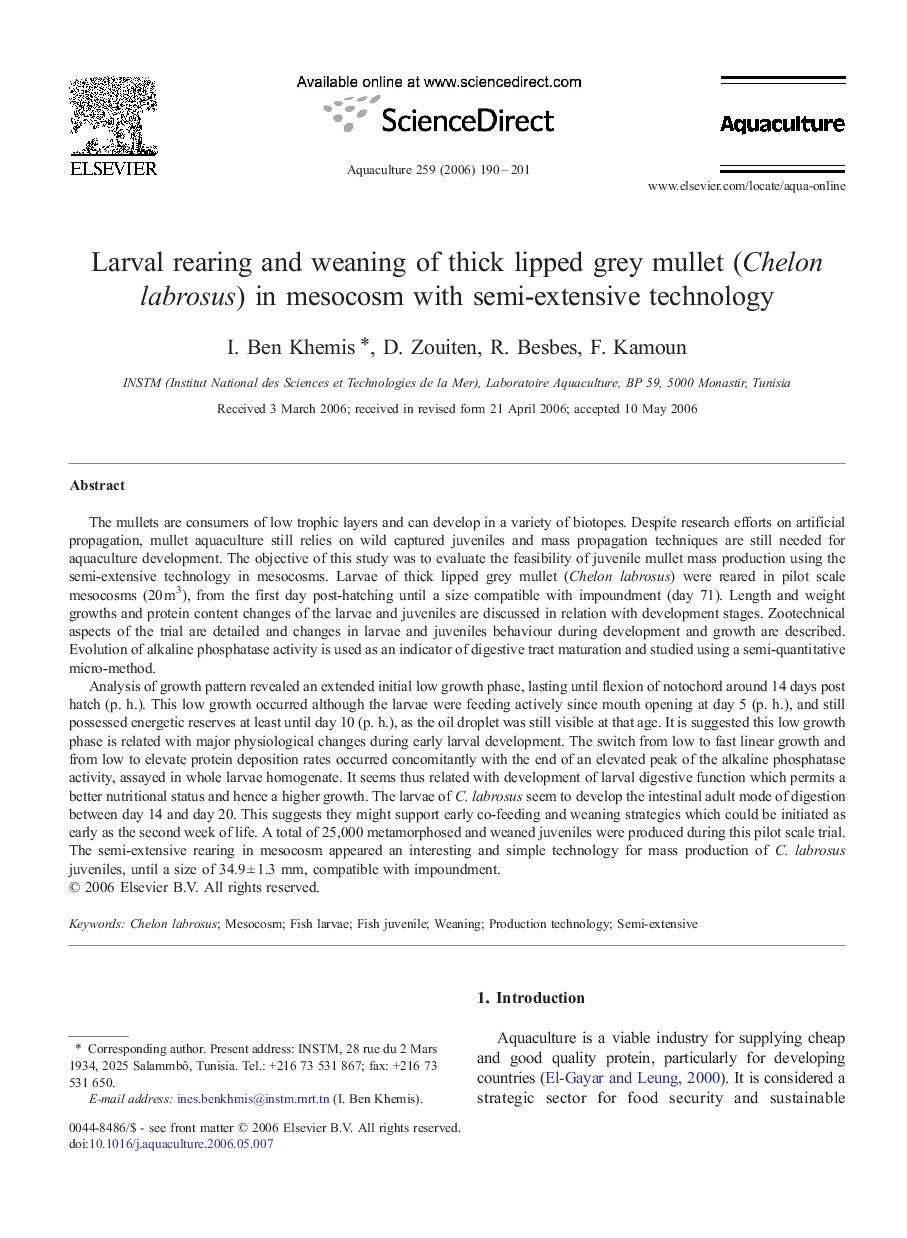| کد مقاله | کد نشریه | سال انتشار | مقاله انگلیسی | نسخه تمام متن |
|---|---|---|---|---|
| 2425781 | 1552982 | 2006 | 12 صفحه PDF | دانلود رایگان |

The mullets are consumers of low trophic layers and can develop in a variety of biotopes. Despite research efforts on artificial propagation, mullet aquaculture still relies on wild captured juveniles and mass propagation techniques are still needed for aquaculture development. The objective of this study was to evaluate the feasibility of juvenile mullet mass production using the semi-extensive technology in mesocosms. Larvae of thick lipped grey mullet (Chelon labrosus) were reared in pilot scale mesocosms (20 m3), from the first day post-hatching until a size compatible with impoundment (day 71). Length and weight growths and protein content changes of the larvae and juveniles are discussed in relation with development stages. Zootechnical aspects of the trial are detailed and changes in larvae and juveniles behaviour during development and growth are described. Evolution of alkaline phosphatase activity is used as an indicator of digestive tract maturation and studied using a semi-quantitative micro-method.Analysis of growth pattern revealed an extended initial low growth phase, lasting until flexion of notochord around 14 days post hatch (p. h.). This low growth occurred although the larvae were feeding actively since mouth opening at day 5 (p. h.), and still possessed energetic reserves at least until day 10 (p. h.), as the oil droplet was still visible at that age. It is suggested this low growth phase is related with major physiological changes during early larval development. The switch from low to fast linear growth and from low to elevate protein deposition rates occurred concomitantly with the end of an elevated peak of the alkaline phosphatase activity, assayed in whole larvae homogenate. It seems thus related with development of larval digestive function which permits a better nutritional status and hence a higher growth. The larvae of C. labrosus seem to develop the intestinal adult mode of digestion between day 14 and day 20. This suggests they might support early co-feeding and weaning strategies which could be initiated as early as the second week of life. A total of 25,000 metamorphosed and weaned juveniles were produced during this pilot scale trial. The semi-extensive rearing in mesocosm appeared an interesting and simple technology for mass production of C. labrosus juveniles, until a size of 34.9 ± 1.3 mm, compatible with impoundment.
Journal: Aquaculture - Volume 259, Issues 1–4, 8 September 2006, Pages 190–201